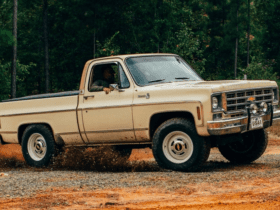There’s been a great deal said about how self-driving cars will change our daily lives. Drafting a document from the driver’s seat while on your way to work certainly sounds like a great way to increase efficiency, but what about more industrial applications?
With the launch of a new truck designed to operate 4,000 feet below the earth’s surface, Volvo is demonstrating they’re ready to bring the commercial side of the auto industry along with the consumer side. Not only does this technology offer huge potential for the mining industry, it could revolutionize service trucking altogether.
Safety First Is the Volvo Way
Volvo is no stranger to the trucking industry. The Scandinavian brand produces some of the world’s finer big-rigs. These eighteen-wheelers operate in a multitude of harsh conditions, where driver fatigue can play a serious role in the longevity of these trucks. Volvo makes a decent profit for each new truck, selling them for around $150,000 a pop.
The cause for all this attention is a new system that uses lasers at four corners of the truck to help it sense when a person might be near and avoid them. To demonstrate the technology, Volvo videotaped their CTO, Torbjörn Holmström, playing chicken with the new truck in the depths of the Kristinberg mine.
Holmström was candid enough to admit he was a little worried about whether the truck would stop, but stop it did, and the promotional material has the eyes of the world on Volvo’s new truck.
Not Just for Mines
Autonomous trucks are not a new idea, but because of the vehicle’s size and other complications, they require some engineering that self-driving cars do not. As self-driving-truck pioneer Otto is demonstrating with their designs, this technology could bring about a serious change in the way we ship and move people.
Not only could self-driving trucks provide reliable, affordable public transportation for millions, they could supplant the human-backed long-haul trucking industry by providing a means to keep more freight on the road for longer drives. It’s a frightening reality for the 3.5 million truckers on the road today.
Driver Assisted vs. Driverless
With labor constituting more than a third of the cost per mile involved in trucking, administrators see the benefits of replacing drivers with self-driving vehicles. While some have suggested a system where a truck could hand control back to a human pilot for evasive measures, the argument against this holds a driver behind the wheel of such a vehicle would likely become inattentive.
Currently, the biggest hurdle for autonomous trucks is federal regulation. Just like their smaller counterparts, there aren’t good enough laws dictating the safe use of self-driving trucks to allow for their unregulated use on roads. A product like Volvo’s could be a different story in an application like a mine.
It’s likely we will see the beginning of this transition not long from now, but how to do it gradually and minimize the inevitable growing pains is a question the answer to which could possibly save lives. In the meantime, regulations and culture will have to catch up with the speed of technology.







